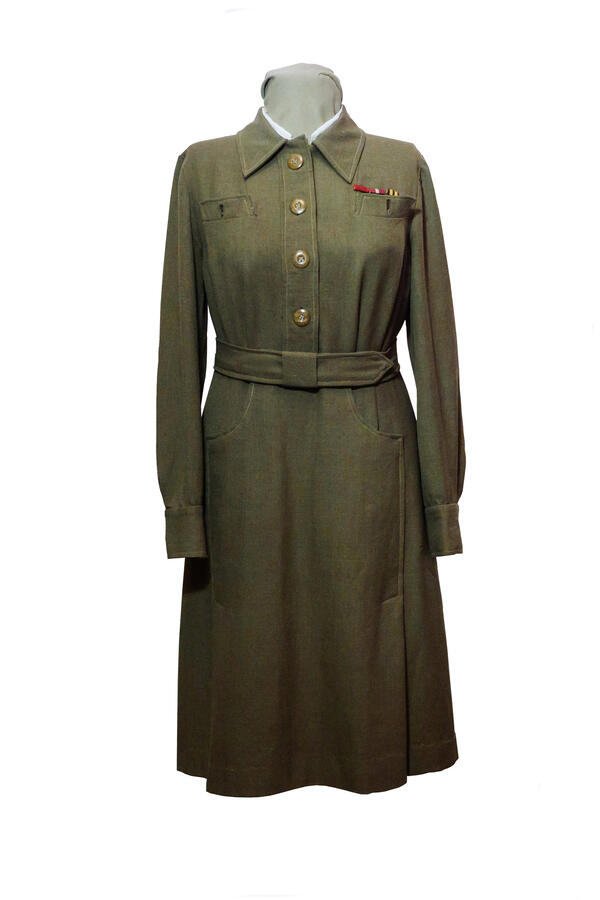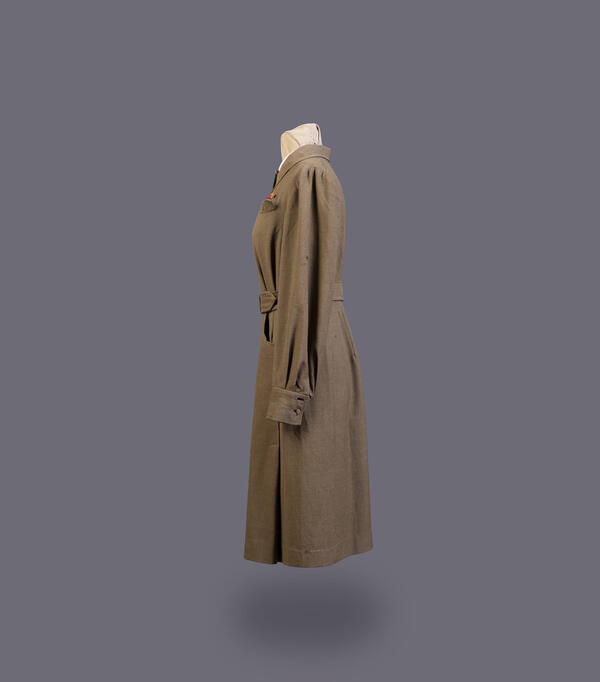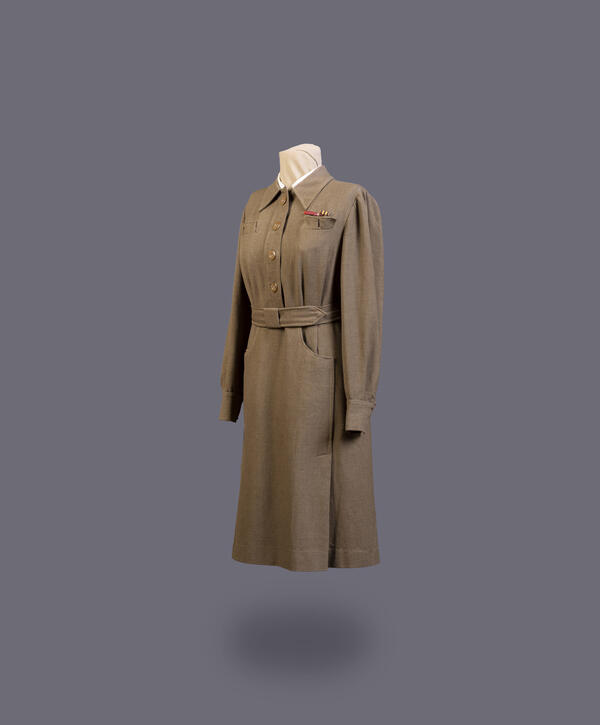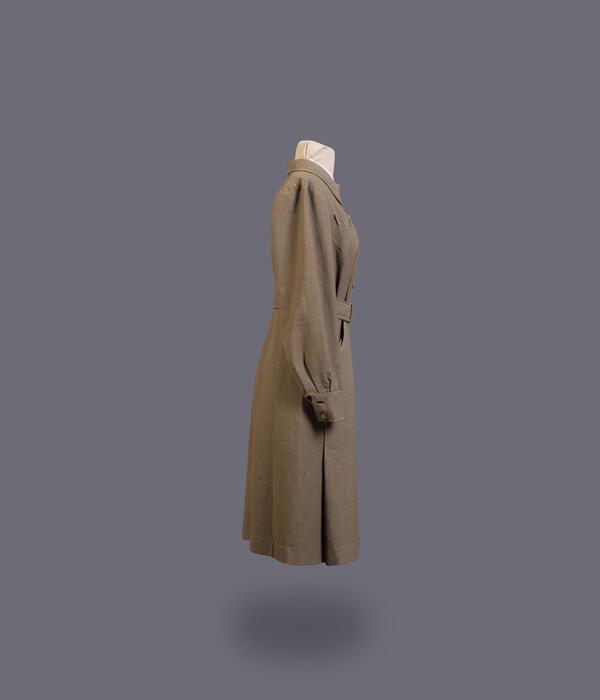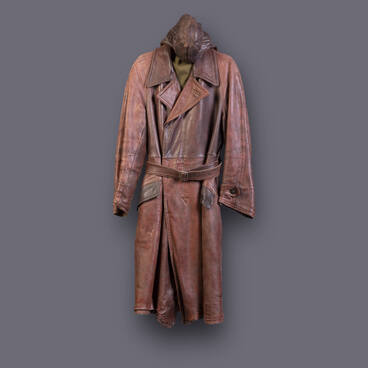During the war there were over 800,000 women in the army, 86 of whom were awarded the title of Hero of the Soviet Union and four were awarded the Orders of Glory in three classes. What kind of uniform did women wear?
The USSR People’s Commissariat of Defense established three basic items for women in non-commissioned officer positions: a beret, a coat and a dress. The cotton or wool khaki-colored coat had a turn-down collar. The sleeves ended in cuffs fastened with two small uniform buttons. From the collar to the waist there was a placket fastened with four large uniform buttons. Chest pockets were slit with a 3 cm wide flap, fastened with small buttons. The curved cuts of the middle part of the front of the skirt formed two pockets. The right end of the belt was pulled through the buckle and fastened with a single hook. This was the uniform worn by the military doctor Klavdia Vlasyevna Psaryova.
Klavdia Psaryova graduated from the Kursk Medical Institute on June 25, 1941. On August 25, 1941 she was drafted into the Soviet army and sent to evacuation hospital No. 1926, a surgical hospital for the seriously wounded. In October 1941 the hospital was forced to evacuate to the rear — Verkhnyaya Tavda, Sverdlovsk region. Then, on the order of the high command hospital No. 1926 was sent to the Volkhov front in 24 hours. People had to work round the clock without leaving the dressing and operating tables, with no days off and leave. The hospital staff had to perform operations, initial wound treatment, remove bullets and shrapnel, apply plaster immobilization, administer blood transfusions. The wounded patients in critical condition were stabilized, then evacuated to the rear, the immobile patients were transferred to local hospitals.
The hospital had to cover long distances along the front lines during the war years. At first it was assigned to the Volkhov Front, then to the Leningrad, 3rd Baltic and 2nd Belorussian Fronts. Psaryova along with her colleagues welcomed the Victory Day in the Polish city of Torun on the border with Germany. The entire staff of evacuation hospital No. 1926 went on a tour of Berlin and signed on the ruins of the Reichstag.
Klavdia Psaryova was awarded the Order of the Red Star, the Order of the Patriotic War of the first class, and several medals.
The USSR People’s Commissariat of Defense established three basic items for women in non-commissioned officer positions: a beret, a coat and a dress. The cotton or wool khaki-colored coat had a turn-down collar. The sleeves ended in cuffs fastened with two small uniform buttons. From the collar to the waist there was a placket fastened with four large uniform buttons. Chest pockets were slit with a 3 cm wide flap, fastened with small buttons. The curved cuts of the middle part of the front of the skirt formed two pockets. The right end of the belt was pulled through the buckle and fastened with a single hook. This was the uniform worn by the military doctor Klavdia Vlasyevna Psaryova.
Klavdia Psaryova graduated from the Kursk Medical Institute on June 25, 1941. On August 25, 1941 she was drafted into the Soviet army and sent to evacuation hospital No. 1926, a surgical hospital for the seriously wounded. In October 1941 the hospital was forced to evacuate to the rear — Verkhnyaya Tavda, Sverdlovsk region. Then, on the order of the high command hospital No. 1926 was sent to the Volkhov front in 24 hours. People had to work round the clock without leaving the dressing and operating tables, with no days off and leave. The hospital staff had to perform operations, initial wound treatment, remove bullets and shrapnel, apply plaster immobilization, administer blood transfusions. The wounded patients in critical condition were stabilized, then evacuated to the rear, the immobile patients were transferred to local hospitals.
The hospital had to cover long distances along the front lines during the war years. At first it was assigned to the Volkhov Front, then to the Leningrad, 3rd Baltic and 2nd Belorussian Fronts. Psaryova along with her colleagues welcomed the Victory Day in the Polish city of Torun on the border with Germany. The entire staff of evacuation hospital No. 1926 went on a tour of Berlin and signed on the ruins of the Reichstag.
Klavdia Psaryova was awarded the Order of the Red Star, the Order of the Patriotic War of the first class, and several medals.

